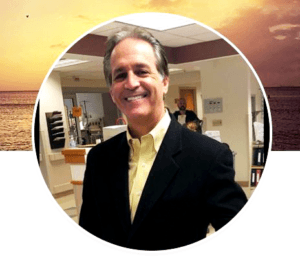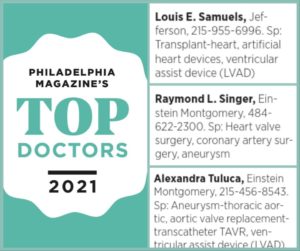Pacemakers
The electrical system of the heart is quite complex and very amazing.
A normal pulse is generated by an initial electrical charge that originates in the sinoatrial (SA) node. This structure is located near the junction between a patient’s superior vena cava and the right atrium.
The pulse then passes through the right and left atria causing these chambers to contract and then collects at the atrioventricular (AV) node. The AV node is located at the very top of the septum separating the left and right ventricular (pumping) chambers.
The AV node then fires electrical pulses through specialized microscopic wiring known as the bundle of His which then divides into separate electrical branches to the left ventricle and right ventricle simultaneously causing these pumping chambers to contract.
There are a variety of electrical problems that can occur due to aging, heart attacks, and even congenital heart disease.
The two most common indications for permanent pacemakers in adults are sick sinus. syndrome and heart block. Sick sinus syndrome results from malfunction of the SA node and heart block occurs when there is malfunction of the AV node.
History of Pacemakers
It has been known for a long time that external electrical stimulation of the heart can cause the heart to contract. Indeed, in 1804, John Aldini in London successfully stimulated hearts to contract on decapitated criminals!
In 1952, Dr. Zoll presented in the New England Journal of Medicine that he was able to pace patients’ hearts with external skin electrodes.
One of the most famous heart surgeons who ever lived, Dr. Walter Lillehei in Minneapolis, asked a television engineer named Earl Bakken to help him develop a small portable pacemaker. Mr. Baakken later became the founder of Medtronics Corporation, now a major supplier of pacemakers and other heart related devices.
Cardiac Pacemaker

Cardiac Pacemaker
In 1959, Elmquist and Senning, in Stockholm, placed the first totally implantable pacemaker. Now, pacemaker insertion is a very common procedure, usually done under local anesthesia, using tiny electrodes inside the heart, attached to a small generator (battery) placed under the skin.
Pacemakers are very effective and very safe. The batteries usually last 7-10 years and are easy to replace during a second minor operation.
Unfortunately for me, whereas the majority of pacemakers were historically placed by cardiac surgeons in the 1970’s, 80’s, and most of the 90’s, currently nearly all pacemakers are placed by cardiologists.
Cardiologists do a fine job with pacemaker insertions, though I personally wish that the procedure stayed in the surgical arena. This is a common dilemma in modern medicine. That is, the overlap of disciplines vying for the same procedures.
Unfortunately, surgeons are “at the bottom of the food chain” and so the referring doctor (cardiologist, internist) would need to send the patient to the surgeon to have a pacemaker done by a surgeon.. That simply isn’t going to happen if the cardiologists wants to do the procedure themselves.

Placement of Pacemaker
ICD Implants
ICD stands for Internal Cardioverter Defibrillator. Modern ICDs look very similar to pacemakers, but they do an additional function. If the heart goes into a very irregular, life-threatening arrhythmia, the devices sends an electrical charge to the heart and zaps it back into normal rhythm! It’s like carrying around your own personal defibrillation paddles! The technology is so advanced today, largely because of our ability to make smaller and smaller computer chips.

Combined Cardiac Pacemaker, Cardiac Resynchronization, and Defibrillation System
These devices can actually sense your rhythm, record it, analyze it, and then send shock waves to your heart to correct the rhythm problem.. Many of these devices can also serve as a pacemaker as well.
When I was in training, the ICDs were put in by surgeons. But just like the pacemakers (see discussion above) most ICDs are put in by cardiologists, specifically cardiology electrophysioloigists (EP).
EP cardiologists are in great demand. This is one of the most rapidly expanding fields in medicine.. In addition, studies clearly show that ICDs should be placed in almost all patients who survive a potentially lethal arrhythmia (known as sudden death syndrome) as well as most patients with cardiomyopathies (diseased heart muscle) whose ejection fractions (EF) are less than 30% (normal being 60%).
Atrial fibrillation
AFib is the most common cardiac arrhythmia. Indeed, over 2 million people in the United States have atrial fibrillation. The Maze procedure was designed to interrupt the multiple reentrant circuits that causes the atrial chambers to fibrillate. Click below to learn more about the procedure.


